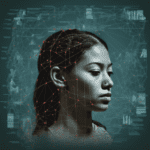
Data plays a crucial role in the fight against human trafficking by helping to identify trends, target resources, and evaluate the effectiveness of interventions, ultimately leading to better prevention and response strategies.
Welcome back to “Data Politics at Datatunnel,” Datatunnel listeners! I’m your host, Fede, and today we’re diving into a deeply important and complex issue: the role of data in the fight against human trafficking. Joining me are my knowledgeable co-hosts, Val and Alan. Val will provide insights on the technical side of data-driven solutions, while Alan will discuss the broader socio-political context.

The Role of Data in the Fight against
Human Trafficking
Fede: Alan, let’s start with you. How can data play a crucial role in combating human trafficking?
Alan: Fede, data is an invaluable tool in the fight against human trafficking. By analyzing data on trafficking trends, we can identify patterns and risk factors that inform prevention and response strategies. This helps policymakers and law enforcement agencies target their efforts more effectively.
Val: Alan is spot on. Additionally, data can be used to evaluate the effectiveness of anti-trafficking interventions. This enables organizations to refine their approaches, ensuring that resources are directed towards the most impactful solutions.
Fede: Val, can you provide some examples of data-driven initiatives that have been successful in combating human trafficking?
Val: Absolutely, Fede. One example is the use of data to develop risk assessment models that identify potential trafficking victims. By analyzing patterns in victim profiles, these models can help law enforcement agencies and social service providers target their prevention and outreach efforts more effectively. Another example is the use of data to monitor and evaluate the impact of public awareness campaigns, ensuring that these efforts effectively reach and resonate with their target audiences.
Alan: And let’s not forget the importance of data-sharing and collaboration among stakeholders. By pooling data and resources, organizations working to combat human trafficking can develop a more comprehensive understanding of the issue, leading to more effective strategies and interventions.
Fede: Thank you, Alan. What are some challenges or limitations when using data-driven approaches to fight human trafficking?
Alan: One significant challenge is the hidden nature of human trafficking, which makes it difficult to collect accurate and comprehensive data. Victims may be hesitant to come forward due to fear or mistrust, leading to underreporting and gaps in our understanding of the issue.
Val: Another challenge is ensuring that data is used ethically and responsibly. This includes safeguarding the privacy and security of sensitive information, particularly when it comes to data on trafficking victims.
Fede: Thank you, Val and Alan, for your insights on this critical issue. In summary, data plays a crucial role in the fight against human trafficking by helping to identify trends, target resources, and evaluate the effectiveness of interventions. However, it’s essential to recognize the challenges and limitations of data-driven approaches and ensure that they are used ethically and responsibly.
If you’d like to share your thoughts on this topic or suggest future episodes, feel free to reach out to us at Datatunnel. Don’t forget to follow us on LinkedIn and X for more insights on data politics. Thanks for listening!